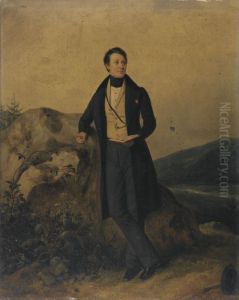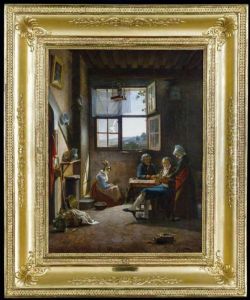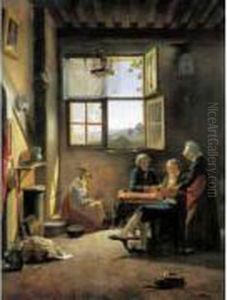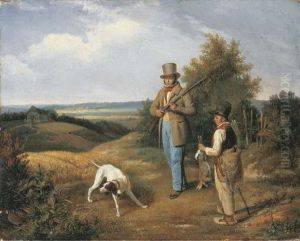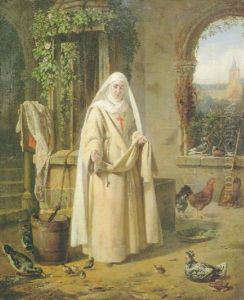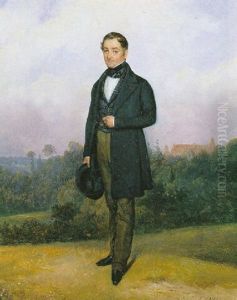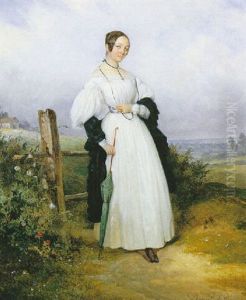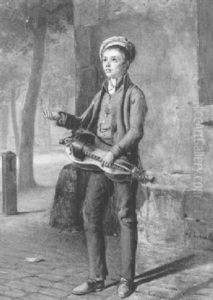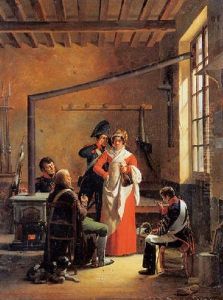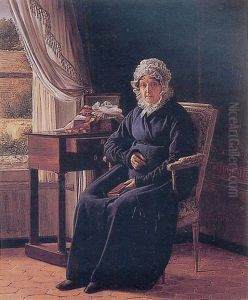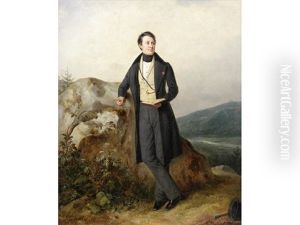Pierre Duval-Lecamus Paintings
Pierre Duval-Lecamus was a French painter born in Paris on July 29, 1822. His artistic journey began under the guidance of his father, Jean-Baptiste Duval-Lecamus, who was also a painter. Pierre later continued his studies at the École des Beaux-Arts in Paris, where he was a pupil of Paul Delaroche, a prominent French painter known for his grand historical scenes.
Duval-Lecamus's early works were primarily historical paintings, which were in vogue during the 19th century in France. However, over time, he shifted his focus towards genre painting, depicting scenes of everyday life with a particular interest in portraying family life and children. His paintings often reflect a romanticized vision of domesticity and innocence, which was well-received in his time.
In 1849, he debuted at the Paris Salon, an official art exhibition of the Académie des Beaux-Arts in Paris, which was the principal showcase for French artists to present their works to the public. His participation at the Salon was met with positive reviews, and he continued to exhibit there throughout his career.
Duval-Lecamus's style is characterized by its fine detail, soft color palette, and a delicate treatment of light, which gives his paintings a warm, inviting atmosphere. His works were influenced by the Rococo revival that took place in the mid-19th century, and he often drew inspiration from 18th-century French art.
Despite the popularity of his genre scenes, Duval-Lecamus did not confine himself to this single subject matter. He also produced portraits, landscapes, and religious paintings, demonstrating his versatility as an artist. His religious works, in particular, are noted for their serene and contemplative nature, often featuring biblical scenes rendered with a sense of quiet dignity.
Throughout his career, Duval-Lecamus received various honors, including medals at the Salon. His works were collected by art patrons and enthusiasts across France, and he gained a reputation for his refined and gentle approach to painting.
Pierre Duval-Lecamus passed away on March 21, 1903, in Paris. Although he may not be as widely recognized today as some of his contemporaries, his contributions to 19th-century French art remain significant, and his paintings continue to be appreciated for their beauty and historical value.







